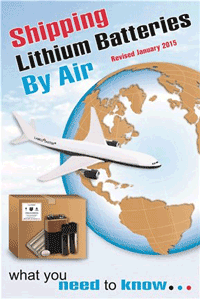
Dangerous Goods Regulations
(DGR) (or hazardous materials regulations, as they are called in the U.S.),
regardless of transport mode, are not easy to understand, and there is
quite some background knowledge one must possess in order to correctly
apply the regulations.
One sure driver for correct background knowledge
is typically achieved thorough training.
That said, it must be noted here at the
top that the language employed in DGR manuals is rather dry and of elaborate
bureaucratese.
Unfortunately in some cases, the way these
manuals are presented does not aid all that much in the comprehension
of the issues at hand.
The IATA Dangerous Goods Regulations, IATA’s
field manual for the transport of Dangerous Goods by air, comes in a different
structure, with graphic examples, notes explaining particular issues,
and a user-friendlier format.
However the IMDG code (applicable to the
maritime transport) and the ADR, the RID, and the ADN (applicable to the
transport of dangerous goods by road, rail, and inland waterway in Europe)
appear without such enhancements, illustrations, and examples. That can
often leave the user looking for some clear direction in these matters,
instead suspended in a regulatory “what if” limbo.
Enter Help-Mates
For Manuals
Today a multitude of publishers and publishing
houses are in the business of “assisting” the user of these
regulations by means of more or less comprehensive and useful publications
aiming at clarifying particular issues.
Take Lithium For Example
Guides for shipping Lithium batteries have
become quite popular lately; apparently no publisher in the helpmate genre
can do without at least one missive in the catalogue.
A well-known publishing house in Europe
has recently been promoting their “Lithium batteries shipped right—an
illustrated guidance,” subtitled “in the regulatory context
of 2015 and an indispensable basis for internal trainings and the drafting
of standard operations procedures.”
The booklet rightly explains the dangers
of non-compliance and the considerable penalties involved.
The example here cites the case of D &
M Custom Injection Molding Corp., which the booklet explains was fined
$168,000 for shipping undeclared Lithium batteries inside e-cigarettes
that “did not meet the requirements of section II of Packing Instruction
970 IATA.” Click
Here.
The Rub
The problem here is that apparently the
authors of this booklet did not further research the subject at hand.
Had they done so, it would have revealed
that likely the IATA DGR was not applicable since the transport in question
was a U.S. domestic shipment.
The small Lithium metal batteries installed
in the equipment were then and still are exempt from the regulations,
e.g. they could have been shipped undeclared, since 49 CFR (Rev. Oct 1,
2009) and SP 188 and SP A 101 permit such practice up to a net quantity
of 5.0 kg of Lithium batteries installed in equipment per package.
Only because D & M shipped a large quantity
with five packages totaling 7.6 kg net battery mass per package, and because
the packages also contained a flammable alcohol in Class 3 (also in an
undeclared manner), was the entire shipment cited by the FAA.
D&M Beat
The Rap . . . Sort Of
And, by the way, D&M appealed the fine
and whilst their appeal was rejected, the fine was reduced by almost one
third to $110,000. More
Here.
What Is Acceptable?
At the time of the incident described here,
the so-called “excepted” Lithium batteries were addressed
by section 1 of Packing Instruction 970 in the IATA DGR 50th edition—but
in 2010 that changed to section II.
Here Is The
Point
There are many other inconsistencies.
So what’s the point here? It’s
just another badly written book, so why bother?
The issue at hand is that the booklet or
any of these attempts to advance “expertise for a price in DGR”
needs to be viewed carefully.
Booklets and manuals directed toward the
safe transport regimen in DGR—no matter who endorsed them—are
about transmitting, in easily understood terms, correct rules & procedures.
The omnipresent point here is that in a world hungry for clear-cut information,
this self-proclaimed “intimate insight into how the regulations
work” and pertinent changes is in many ways uninformed baloney.
Following the outlined recommendations may
result in fines or worse, since even basic facts are wrong.
Uninformed, shoot-from-the-hip helpmates
are nothing more than an attempt to make some money, whatever the cover
letter promises.
 The publications also cast a dark shadow
on the honest attempts to publish and really assist and help the shippers
with their often-cumbersome task. The publications also cast a dark shadow
on the honest attempts to publish and really assist and help the shippers
with their often-cumbersome task.
Some DGR Alternatives
The IATA DGR is great, but for some may
be too expensive.
But if Lithium information is on your menu,
try the IATA LBSG (Lithium Battery Shipping Guideline), which contains
only the regulations applicable to Lithium batteries, or the Labelmaster
Air Shipper might be money better spent to get the information needed.
All three are excellent choices.
But like anything else, getting through
the minefield of less than helpful “helpmate” publications
of DGR regulations can be dangerous all by itself.
Jens
|



